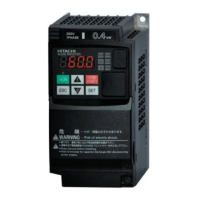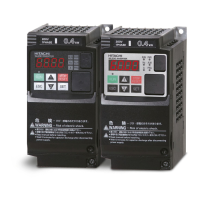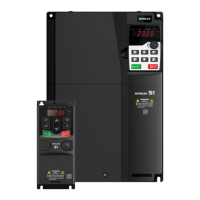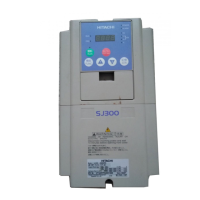Chapter 11 RS485 Communication
11-4-1
11.4 Inter-inverter Communication Function EzCOM
11.4.1 What is EzCOM?
What is the Inter-inverter communication function (EzCOM)?
Inter-inverter communication function (EzCOM) is a function that uses Modbus-RTU
communication to perform mutual communication between Hitachi Inverters (WJ-C1, WJ200, SJ
series P1) without external control equipments such as PCs or PLCs.
Coordinated operation between inverters is enabled without external control equipment by
issuing a notification from one inverter to another, such as a change in frequency command or a
change in operation/stop status.
Combined with the programmed operation function (EzSQ), it is also expected to be used in
unique driving and other applications tailored to user applications. Refer to "12.2 Program
Operation Function EzSQ" for the program operation function (EzSQ).
The operation procedures of EzCOM are outlined below. (When four inverters are connected)
During EzCOM communication, each inverter shares the roles of "Administrator inverter",
"Master inverter" and "Slave inverter". Be sure to prepare the inverter of node address 1. The
inverter becomes the "Administrator inverter".
When EzCOM communication starts, "Administrator inverter" will gradually switch "Master
inverter". At this time, all other than "master inverter" are "slave inverter".
As with normal Modbus communication (RS-485), connect the [SP], [SN] and [L] terminals of the
inverters that perform EzCOM communication. (Turn on the termination resistor selector
switches of the inverters at both ends constituting EzCOM communication.)
In EzCOM communication, up to eight master inverters can be set.
Up to five writes from each master inverter can be set.
(Data can also be written to an inverter that does not become a master like the inverter 4 in the
figure above example shown.)

